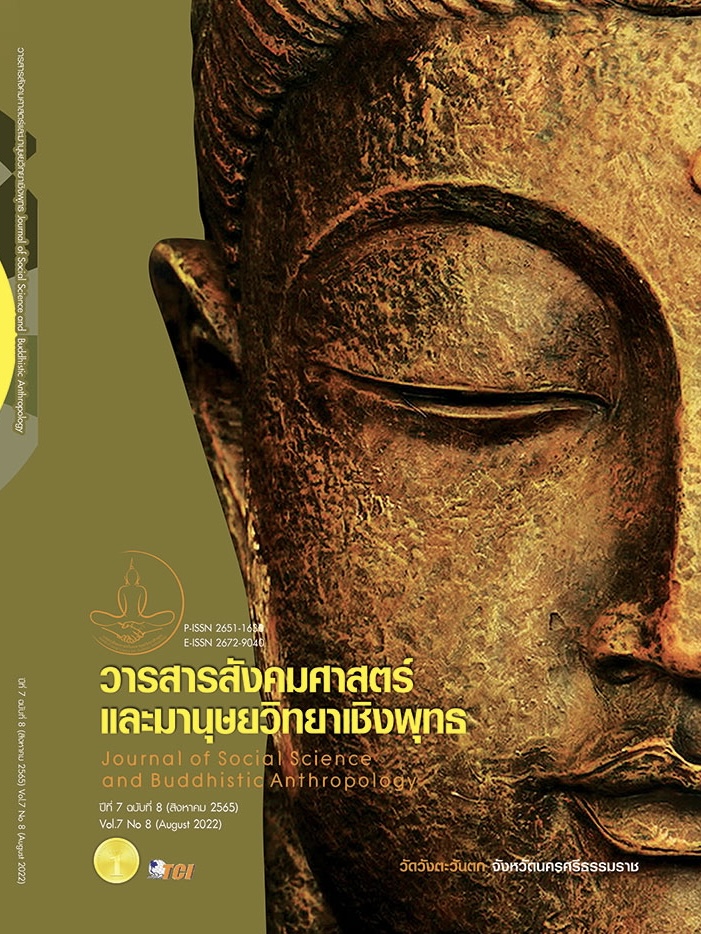THE DEVELOPMENT OF MEASUREMENT FORM AND HOLISTIC HEALTH ASSESSMENT FOR MATTHAYOMSUKSA 1 PATUMWAN DEMONSTRATION SCHOOL
Keywords:
Holistic Health Measurement Form, Holistic Health Assessment, Matthayomsuksa 1, Patumwan Demonstration SchoolAbstract
The objectives of this research article were to 1) develop and examine the efficiency of the holistic health measurement form 2) assess holistic health of the students. The research methods are synthesis and survey. The sample consisted of 320 Matthayomsuksa 1 students of Patumwan Demonstration School. The research instruments were the holistic health measurement form consist of 1) physical dimension 2) brain dimension and 3) emotional and social dimension. The instruments were examined the content validity by experts, reliability and discrimination by pilot students and selected items that met the criteria in order to assess holistic health of the students. The results of the research are as follow: 1) The holistic health measurement form consists of 4 components of physical dimension, 3 activities of brain dimension and 6 elements of emotional and social dimension. 2) The holistic health measurement form indicates that physical dimension; body composition of the students results from body mass index for age is balanced, muscle strength and endurance results from 30 seconds modified push-ups are low, flexibility results from sit and reach is very low, and the endurance of the cardiovascular and circulatory systems results from 3 minutes step up and down is moderate. Brain dimension; originality and elaboration is at low level. Fluency and flexibility are at high level. Emotional and social dimensions; all components are at a good level.
References
กระทรวงการท่องเที่ยวและกีฬา. (2562). แบบทดสอบและเกณฑ์มาตรฐานสมรรถภาพทางกายของนักเรียนระดับมัธยมศึกษา (อายุ 13-18 ปี). กรุงเทพมหานคร: บริษัท โอเคแมส จำกัด.
กระทรวงศึกษาธิการ. (2551). หลักสูตรแกนกลางการศึกษาขั้นพื้นฐาน พุทธศักราช 2551. กรุงเทพมหานคร: โรงพิมพ์ชุมนุมสหกรณ์การเกษตรแห่งประเทศไทย จำกัด.
ล้วน สายยศ. (2543). เทคนิคการวิจัยทางการศึกษา. (พิมพ์ครั้งที่ 5) กรุงเทพมหานคร: สุวีริยาสาสน์.
ลักขณา สริวัฒน์. (2549). การคิด = Thinking. กรุงเทพมหานคร: โอเดียนสโตร์.
วันวิสาข์ ศรีภูมิ. (2552). ผลของช่วงเวลาการสอบซ้ำและความยาวของแบบทดสอบที่มีผลต่อความเชื่อมั่นและความเที่ยงตรงของแบบทดสอบ. วารสารการวัดผลการศึกษา มหาวิทยาลัยมหาสารคาม, 15(3), 38-44.
วิริยา บุญชัย. (2529). การทดสอบและวัดผลทางพลศึกษา. (พิมพ์ครั้งที่ 2) กรุงเทพมหานคร: ไทยวัฒนาพานิช.
วีระ สุดสังข์. (2550). การคิดวิเคราะห์ คิดอย่างมีวิจารณญาณ และคิดสร้างสรรค์. กรุงเทพมหานคร: สุวีริยาสาสน์.
ศรันย์ พิมพ์ทอง. (2564). การพัฒนาเครื่องมือวัดในการวิจัยพฤติกรรมศาสตร์. กรุงเทพมหานคร: บริษัท บุ๊คพลัส พับลิชชิ่ง จำกัด.
ศันสนีย์ นาคะสนธิ์. (2564). แนวทางการพัฒนาทักษะทางสังคมของนักเรียนชั้นมัธยมศึกษาปีที่ 6 สังกัดสำนักงานเขตพื้นที่การศึกษามัธยมศึกษาเขต 10 ในจังหวัดสมุทรสงคราม. สิกขาวารสารศึกษาศาสตร์, 8 (1), 153-165.
สำนักงานคณะกรรมการพัฒนาการเศรษฐกิจและสังคมแห่งชาติ. (2559). แผนพัฒนาเศรษฐกิจและสังคมแห่งชาติ ฉบับที่ 12 พ.ศ. 2560-2564. เรียกใช้เมื่อ 29 เมษายน 2564 จาก https://www.nesdc.go.th/ewt_news.php?nid=6420&filename=develop_issue
สุพิตร สมาหิโต และคณะ. (2555). แบบทดสอบและเกณฑ์มาตรฐานสมรรถภาพทางกาย สำหรับเด็กไทยอายุ 7-18 ปี. กรุงเทพมหานคร: สำนักพิมพ์สัมปชัญญะ.
Goleman, D. (1998). Working with emotional intelligence. New York: Bantam Book.
Torrance, E.P. (1965). Creative Behavior. New Jersey: Prentice-Hall.
Downloads
Published
How to Cite
Issue
Section
License
Copyright (c) 2022 Journal of Social Science and Buddhistic Anthropology

This work is licensed under a Creative Commons Attribution-NonCommercial-NoDerivatives 4.0 International License.








